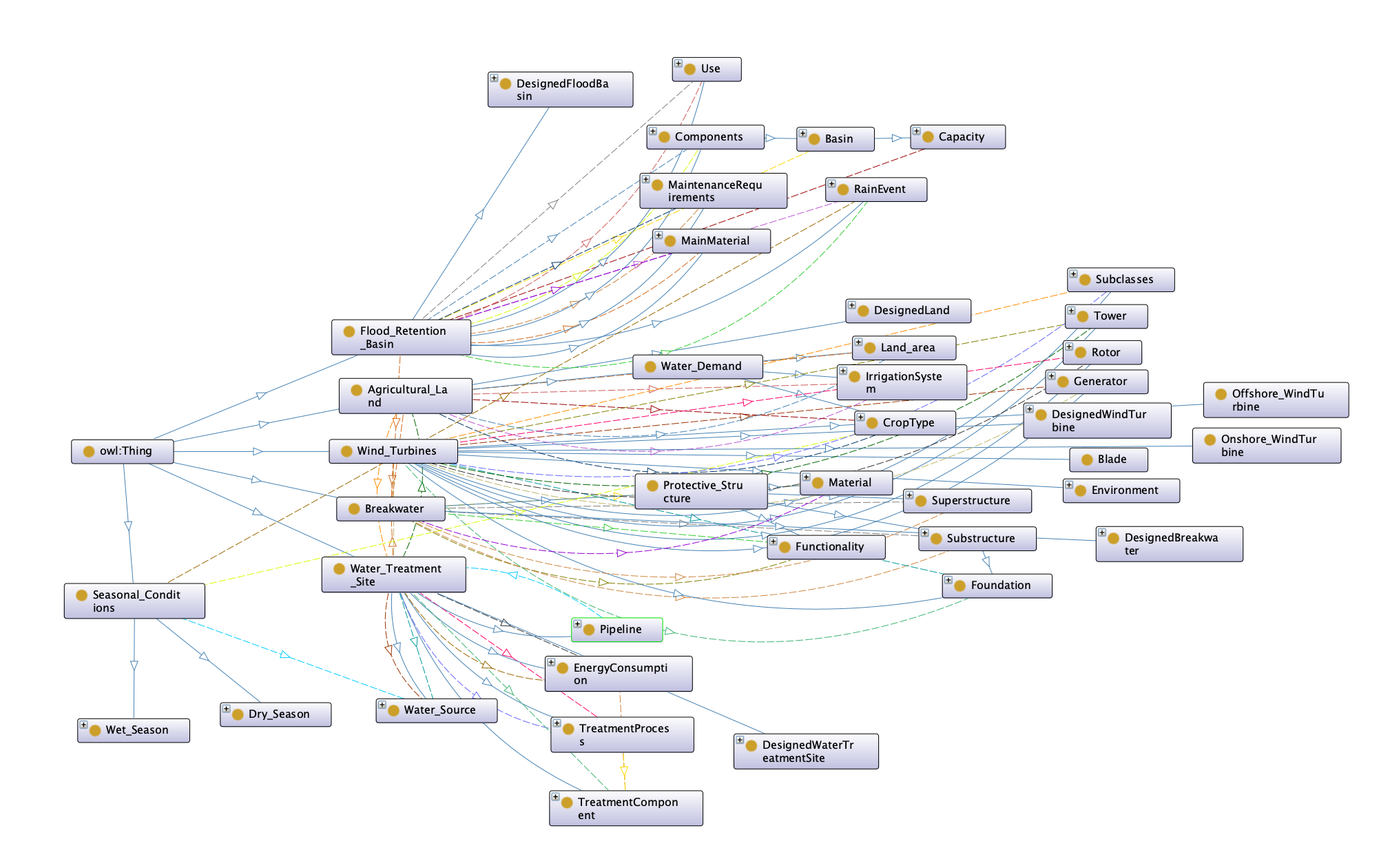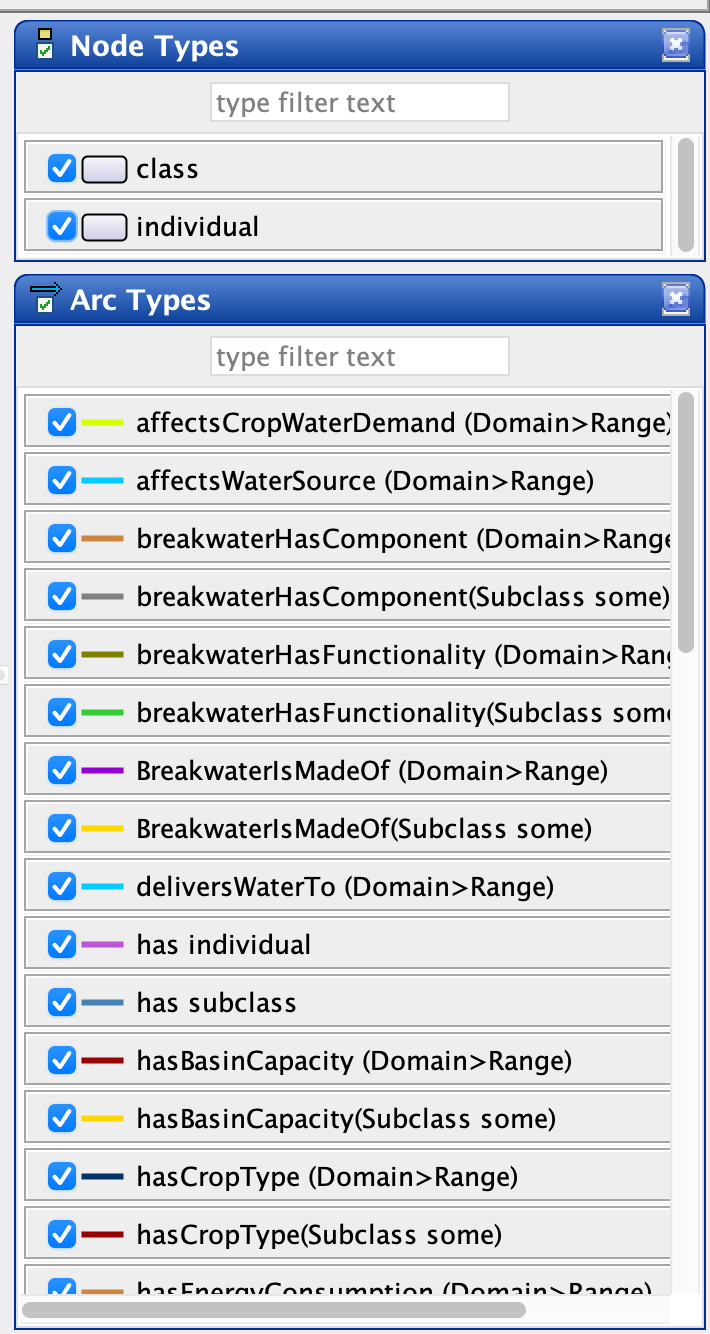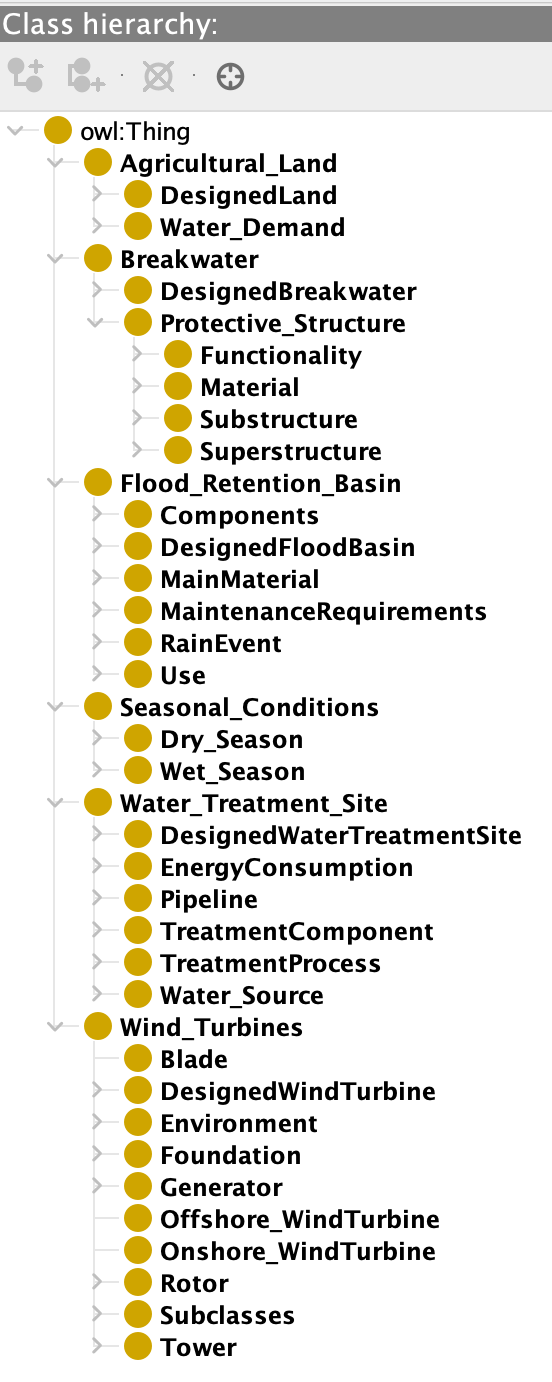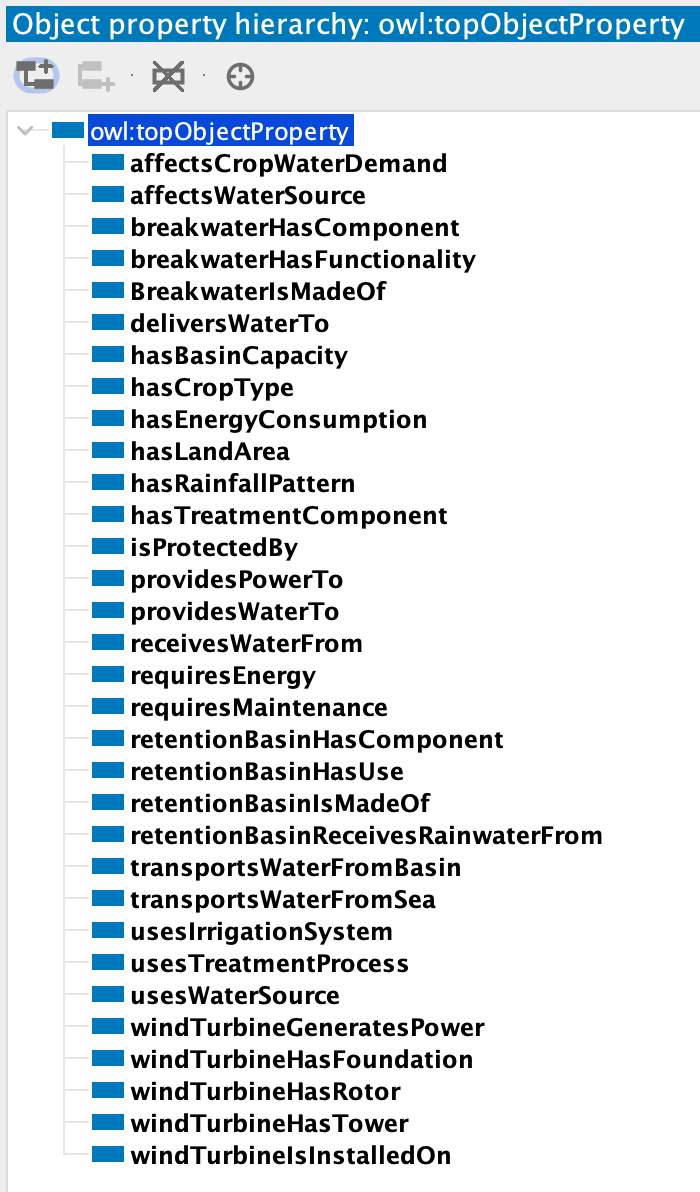Purpose/Goal of the Ontology:
The goal of this ontology is to provide a structured framework for managing and optimizing an integrated system that combines sustainable water treatment, renewable energy generation, and agricultural water management. It aims to enhance the decision-making process by clearly defining the relationships between system components such as retention basins, treatment plants, wind turbines, breakwater and urban agricultural areas. The ontology’s purpose is to improve system efficiency, reduce environmental impacts, and ensure the long-term sustainability of water resources and energy use, while supporting urban agricultural needs.
Intended Users and Use:
- Intended Users:
- Urban Planners and Engineers: For designing and optimizing integrated water management and energy systems for agricultural use.
- Agricultural Managers: To ensure that water supply systems meet agricultural water demand efficiently, with a focus on water and energy sustainability.
- Environmental Scientists and Policy Makers: For assessing environmental impacts and sustainability of integrated systems in agricultural settings.
- Renewable Energy Engineers: To design energy-efficient systems that integrate renewable energy into water treatment and irrigation operations.
- Researchers and Academics: To study the interdependencies of water management, renewable energy, and agriculture through a formalized framework.
- Intended Use:
- System Design and Optimization: To model the interrelationships between components for optimal performance in real-world agricultural settings.
- Resource Management: To enable efficient allocation and use of water, energy, and materials across the system.
- Environmental and Economic Assessment: To evaluate the environmental and economic impacts of the integrated system, focusing on resource conservation and cost reduction.
- Sustainability Evaluation: To monitor and assess how the system supports sustainable urban agricultural practices and minimizes environmental impact.
- Decision-Making Support: To guide stakeholders in making informed decisions regarding system adjustments, resource allocation, and operational strategies based on real-time data and predictive models.
The scope
The scope of this ontology covers several key components of an integrated system designed for sustainable water management, renewable energy generation, and agricultural water use. It includes the entire water lifecycle, from storage in retention basins to treatment (both rainwater and seawater) and distribution through pipelines to urban agricultural areas. The ontology also incorporates renewable energy generation, particularly through wind turbines, to power the water treatment site, reducing reliance on external energy sources. Additionally, the system addresses urban agricultural water needs by factoring in crop types, irrigation efficiency, and seasonal variations in demand.
Lastly, the ontology supports system optimization and decision-making by balancing energy and material use while ensuring agricultural needs are met and sustainability goals are achieved.
Class Hierarchy and Object Properties
Each system is represented by its own class, with subclasses that describe the components, materials, usage, and other relevant characteristics. The systems are interconnected through object properties, which define the relationships between them using domain and range. For example, the property receivesWaterFrom links the water treatment system to the agricultural land, indicating the flow of water between these components. These object properties help clarify the connections and interactions between the different systems. The property restrictions were also defined and can be found in the ontology attached on the main page. Here is an overview of the classes and the object properties:
Ontograph
An ontograph for this system visually represents the key components of the integrated system. It includes classes for elements like retention basins, water treatment plants, wind turbines, breakwaters and urban agricultural areas, with object properties linking these components based on their functions and interdependencies. For each system, there are two design options represented by individuals within each class, filled with data that mirrors the parametric model. These individuals use mostly minimum and maximum values to define the range of possible configurations for each component. The explanation of the nodes can be found on the right side of the ontograph.


Engineering Examples
Here are three engineering examples with their specific scenario and use case:
1. Design of a water treatment plant:
Scenario: A new water treatment plant must be designed to supply urban agricultural water demands in a highly populated city that experiences more frequent heat waves and heavy rainfall periods due to climate change.
Use Case: The ontology provides information on different physical components of the integrated system. Engineers can test various configurations, such as adjusting the dimensions of the retention basin and the breakwater, modifying the number and type of wind turbines, and analyzing how these changes affect system performance. Additionally, this insight can be used to design a parametric model for structural and durability analysis.
2. Modification of an Existing Structure for New Loads:
Scenario: Many structures were originally designed under assumptions that no longer hold due to the increasing frequency and intensity of extreme climate events. The system must be adapted to ensure resilience against future conditions.
Use Case: Engineers can consult the ontology to assess how an extraordinarily wet season impacts the retention basin and the breakwater’s protective role in shielding the infrastructure. Additionally, the energy demand for urban agricultural water supply may change due to fluctuations in available water sources. A parametric model incorporating projected climate data can help optimize the system’s design, ensuring it remains functional under different climate scenarios.
3. Modification on use:
Scenario: As the city’s population grows, so does its water demand. The integrated system must be adapted to support both urban agriculture and residential water supply.
Use Case: The ontology provides insight into the key design variables that must be adjusted to meet the increased demand. Engineers can analyze different expansion strategies, including increasing the retention basin’s capacity, modifying the treatment plant’s process, and scaling up the wind farm’s energy output to meet the additional power requirements. The breakwater remains a critical element, protecting both the offshore energy infrastructure and the intake system. This data can be used to develop a parametric model that incorporates both existing and new structural elements, ensuring long-term performance and efficiency.
← Integration Context | Home page | Combined Parametric Model →

